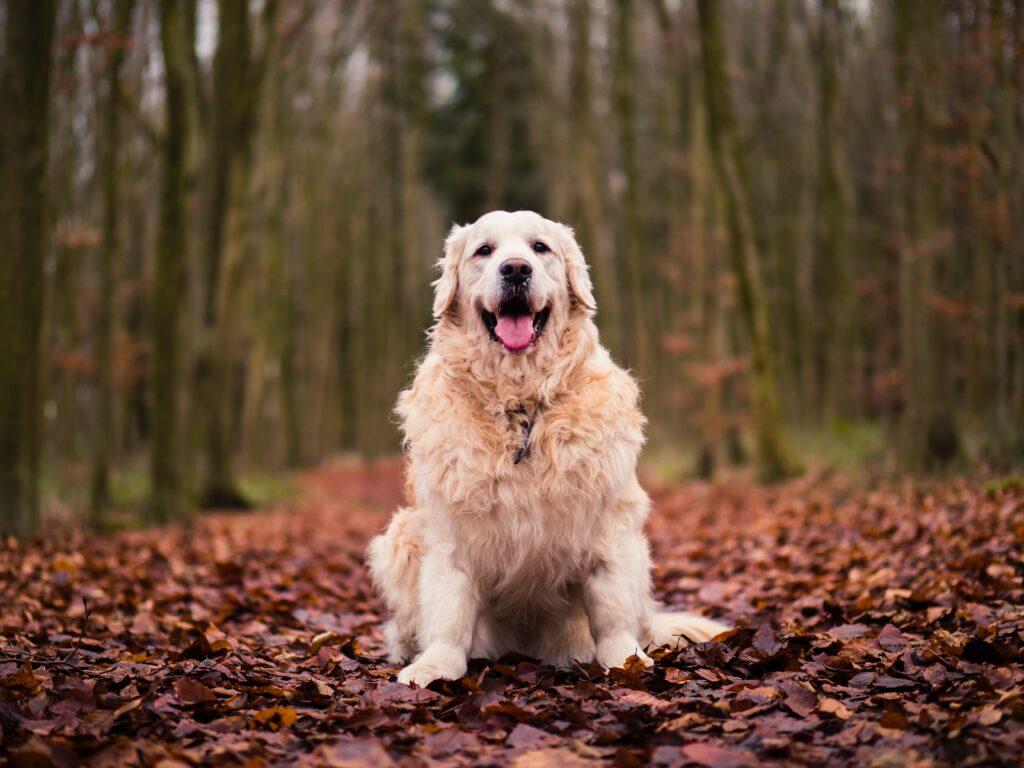Let’s face it. We’ve all as dog owners have seen our furry family member rolling around on the carpet, rubbing their eyes with their paws, scooting across the carpet on their back side while a range of emotions go through our minds. On one hand it looks funny, embarrassing, or gross. You can’t decide whether to laugh or feel sorry for your pet. We as humans deal with allergies all of the time, especially in early spring. But how do dogs react to allergies? Continue reading below as we explore this topic and how to identify signs and perhaps treat symptoms to quell your companion’s suffering.
Table of Contents
How Do Dogs React To Allergies?
When your dog starts to experience an allergic reaction here are of some of the symptoms to look for:
- Itchy, red, or inflamed skin
- Coughing, or wheezing
- Runny nose or eyes
- Ear infections
- Vomiting or diarrhea
Itching, muzzle redness or inflamed skin:
In our experience our pooch will display redness around the nose and or muzzle area. This can range from a dull pinkish color to bright red. The dog may attempt to lick its nose or muzzle and this in turn can cause the rash to look worse and become more inflamed. Red or inflamed skin can also appear in other areas, some more private if you know what we mean. If the redness or inflammation is in the anal area, this will cause the dog to scoot along the ground or carpet on their hind area. This scooting action is when we refer to the dog as a `scooter’.
Sneezing, coughing, or wheezing:
It is not that uncommon for a dog to cough. More often than not when your furry friend coughs it is due to a sudden irritation to the trachea causing (tracheal collapse). In our dog’s case she will do this occasionally if she has an irritant go down her throat such as a carpet fiber when chewing a toy or perhaps swallowing something too fast.
Dogs react to allergies in different ways. Allergens can cause a dog to cough due to tracheal or bronchial irritation. When a dog coughs they will sometimes open their mouth really wide and sound as though they are clearing their throat or gagging. Prolonged coughing should not be taken lightly. If the coughing lasts more than a day or two, you should probably consult a veterinarian. Certain types of coughing in dogs can also indicate kennel cough or even heart disease.
Runny nose or eyes:
Another indicator of your dog having an allergic reaction is perhaps the most obvious. A runny nose and gunk around the eye lids (known to us as eye boogers) is a sign your companion is struggling with something in the environment. When there is a dramatic change in environment say, a dog going from a really hot and dry climate to a really hot and muggy climate, your pet may suddenly be exposed to more or new types of allergens.
Ear infections:
In some cases allergies can lead to bacterial ear infections. Dogs with floppy ears are more prone to having this happen especially if they go from a really dry and arid climate to a really hot a muggy one. Bacteria in the ear canal will thrive in a humid environment. Dogs will generally shake their head consistently throughout the day and even begin to tilt their head to one side, generally the side of the ear that is bothering them the most.
In a worst-case scenario the dogs eyes may even start to rapidly go side to side and become cross-eyed. The dog will begin to lose their balance and their head will be really tilted. If you see this happen, get your dog to the vet right away. Do not delay. This could possibly be a condition called Vestibular dieses.
Vomiting or diarrhea:
Allergies in dogs can affect the digestive system in some cases. Unfortunately, this can lead to diarrhea and or vomiting. There are some home remedies that you can try such as giving your dog ½ to 1 teaspoon of honey dependent upon the size your dog. Make sure you do this in moderation, not more than once or twice a day. If they do not appear to improve within 24 – 48 hours, it is best to air on the side of caution and visit the vet.
What types of things cause allergies in dogs?
It may surprise you, but pets, specifically dogs can be allergic to the same types of things you and I are. Essentially an allergic reaction is the body’s hyperreactive response to something in the home or outdoors. Some of the triggering agents are listed below.
Environmental Agents:
- Pollen
- Dust mites
- Mold spores
- Flea bites
- Chemicals
- Certain types of food
Some of these things can be lessened or mitigated by making sure your home is as clean as possible. We know this can be difficult to keep up with but tasks such as routine vacuuming and dusting, changing out air filters and giving your rescue more frequent baths may help to minimize some of the allergens and alleviate some of the reaction.
Special Note Regarding Lawn Care. When cutting your grass, make sure to pull any potentially harmful weeds or mushrooms. Mushrooms in many cases can be toxic and potentially deadly to dogs in which case we are talking about a much more dire situation.
Depending upon the region or area you live in, fleas can also be the source of an allergic reaction, however this is not quite as likely. If you live in an area where fleas are prevalent, it is important to administer flea and tick medication to your dog every so often.
Food related:
And finally, food related allergies. Determining if your dog is allergic to a specific type of food can be complicated. Quite often you must be patient and use trial and error to isolate what particular food could be causing your pet’s allergic reaction. In some cases, it may be helpful to put your dog on a hypoallergenic diet for a few weeks to see if things clear up. You will want to consult your veterinarian before doing this and they may require some blood work samples to make a recommendation.
Ways to minimize dog allergies:
There are some ways you can manage your dog’s allergies from home. And while these steps will not necessarily provide a long term solution they may give temporary relief for your valued family member.
- Give your dog more frequent baths. Be vigilant not to get water in the dogs ears. Twice a week is what you should aim for during months where pollen is at its highest levels. Don’t over do it because there are good natural oils in the dog’s coat.
“Washing the dog reduces recoverable allergen from dog hair and dander. –
National Library of Medicine - T Hodson 1, A Custovic, A Simpson, M Chapman, A Woodcock, R Green
- Vacuuming floors and carpets on a more regular basis could also help a little. Anytime you can lessen the amount of pollen the better.
Managing Allergic Reactions in Dogs
Reducing allergic reactions in dogs can be a good amount of detective work, but there are a few things you can do to help your furry friend. First, it’s important to keep your dog’s environment clean and free of as much of the allergens as possible. This may include vacuuming regularly, washing your dog’s bedding, and using air purifiers.
Here are some things you can apply to skin or even give orally to your dog to help with allergies. Some options include:
- Giving Oatmeal baths: Just fill up your bathtub and mix in some oatmeal (you can get this from your local pet store). Try doing this once or twice a week.
- Coconut Oil: Coconut oil has anti-inflammatory properties and can help reduce itching. You can rub coconut oil directly on the dogs skin or give to your dog orally. If giving orally, about ¼ teaspoon for small dogs and 1 teaspoon for large dogs once or twice a day.
- Rubbing Aloe Vera on Dog’s Skin: A good way to reduce skin inflammation is to rub a little bit of aloe vera on the tips of your fingers and lightly rub into the dog’s skin.
- Benadryl: Benadryl is an over-the-counter drug and has been shown to temporarily relive allergic reactions but this should be given sparingly. Typically about 1 milligram per pound so if your dog ways 25lbs and you have a 25 milligram tablet, you can give one of these tablets once or twice a day.
Because there are a very small percentage of pets that may have adverse reactions to the above home remedies it is always a good practice to speak with your vet before you rub any oils on your dog, however in most cases the above home remedies are safe when done in moderation.
FAQs About Allergies in Dogs:
Can dogs be allergic to humans?
Yes, dogs can be allergic to humans, although it is rare. Most human allergies in dogs are caused by a protein found in their saliva, urine, and dander.
Can allergies in dogs be cured?
No, there is no cure for allergies in dogs, but symptoms and reactions can be mitigated.
Can allergies in dogs be prevented?
No, dog allergies cannot be completely eliminated, but there are many steps you can take to reduce the number of allergens in your household. Your best course of action is to keep your home free of as much dust and pollen as possible.
How long does it take for allergy shots to work in dogs?
It can take several months to perhaps a year.
The Great Take Away
When your dog has allergic reactions to the home and environment it can be very frustrating for both you and your pet. Just like a human sneezing all day long and blowing your nose and suffering fatigue and possibly throwing out your back from sneezing so hard, dogs also deal with extreme fatigue from coughing, sneezing, itching or scooting on a daily basis.
You are not alone in dealing with your dog’s allergic reaction. This is very common, especially for humans and dogs in southern states. Luckily there are many ways to help your furry friend cope better, and your pets’ allergies cannot be eliminated completely, but their quality of life during allergy season can improve.


